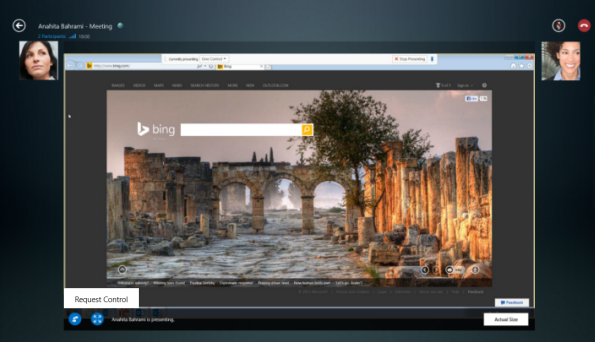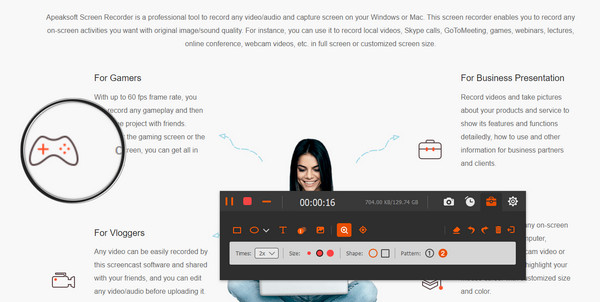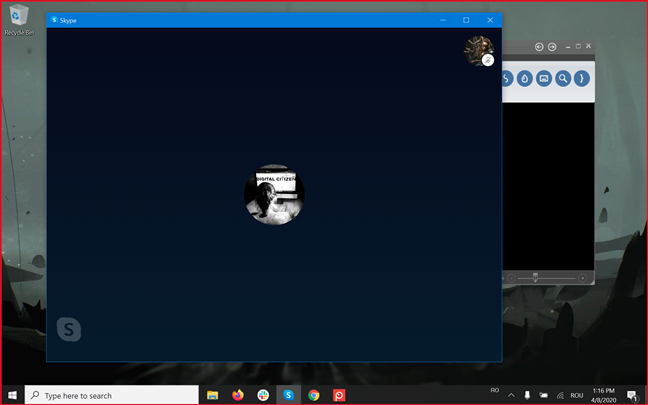

:max_bytes(150000):strip_icc()/Skypecallwithascreenshothighlighted-88ec28a0c98848f6a1de2b9b5b76a1cc.jpg)
While a standard H.323 or SIP call can support sending a second stream of video displaying this content the actual standard that makes this possible are not H264 itself.Ī call established using the H.323 call control platform will actually use the H.239 standard for establishing content sharing, where as a call that instead leverages a standard video SIP platform will use Binary Floor Control Protocol (BFCP) for establishing content. The transmitted pixels could be arranged to display a smiling face captured by a camera, or instead show the familiar view of a user’s PowerPoint application captured by a video output device of some sort. The H.264 standard is simply a video codec which could include anything in the actual image. For those with a foundational understanding in the traditional video conferencing world that statement can sound odd. Unfortunately the problem with that simple statement is it can be interpreted differently depending on whom is reading it. Obviously companies looking to address interoperability scenarios with SfB and their standards-based video conferencing systems would sit up and take notice to these claims. Generically speaking it was communicated as some level of native support for “ H.264 content sharing” coming to the Skype for Business platform. Up until now there have been only a few places that this new feature has been discussed in the public realm, and most of that was before there was even a name for it. Make sure to also read the new article to understand the latest functionality provided by VBSS. While the concepts covered in this article are still applicable some of the limitations documented below are no longer valid.
SKYPE SHARE SCREEN FULL SCREEN GAMES UPDATE
The Office 365 Roadmap currently lists this feature under the In Development section, but it is now available with the release of the Skype for Business 2016 client that is included in Office 2016.Ī newer article entitled Skype for Business VBSS Update has been posted which highlights even newer functionality in Skype for Business. With a more complete understanding of VBSS and its potential roadmap then the answers to various interoperability questions should be quite clear. This article will explain what this new functionality is, as well as what it is not. Most of the questions have been centered around the topic of video interoperability, thanks in part to some generalized statements. There is currently very little information available about this new functionality, and as with anything not well understood it seems to be creating more confusion than warranted. Very frustrated with the way Microsoft keeps releasing new product versions that have LESS functionality than the older versions, and then forcing us to "upgrade".Video Based Screen Sharing (VBSS) is a new Skype for Business client capability that has for the most part flown in under the radar.

(But this used to work in 2010, so clearly it can be done, you just broke it.)
SKYPE SHARE SCREEN FULL SCREEN GAMES HOW TO
If the answer is: "Sorry, that's beyond our abilities because we are such lame programmers we can't figure out how to scale things properly" then just say so. This is important because if the presenter's screen is low resolution, then displaying their screen in a tiny area of my high resolution display is going to result in something unreadable. I want the display to be correctly scaled so it fills my screen. The presenter's display is higher resolution than mine, I don't want part of the display to be invisiible, and I don't want scroll bars. If the presenter's display is lower resolution than mine, I don't want a bunch of blank space around the edges. I want to fill my display with whatever the presenter is showing.

I think the OP is trying to figure out the same thing as I am. This answer is essentially saying: "You can't do that."


 0 kommentar(er)
0 kommentar(er)
